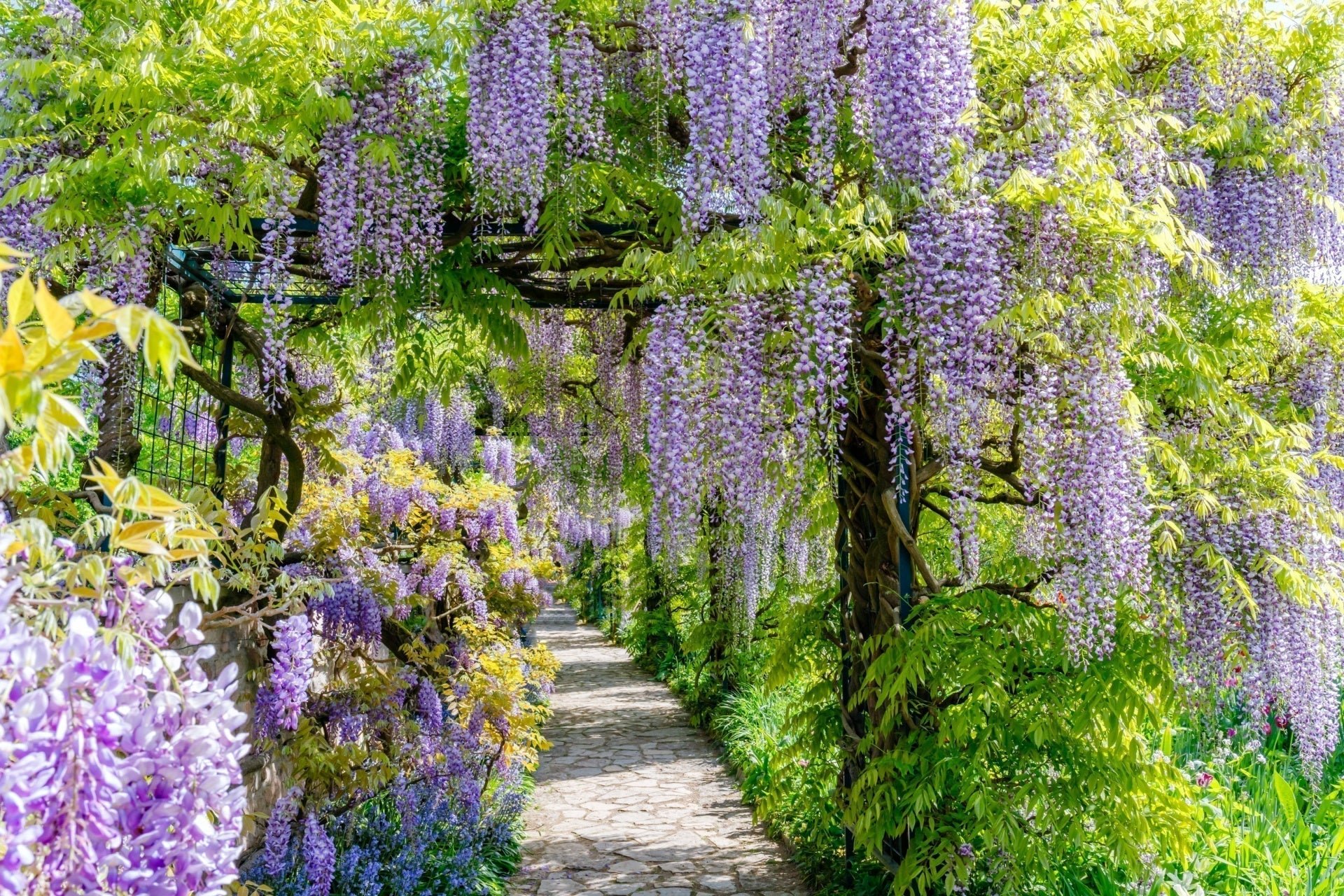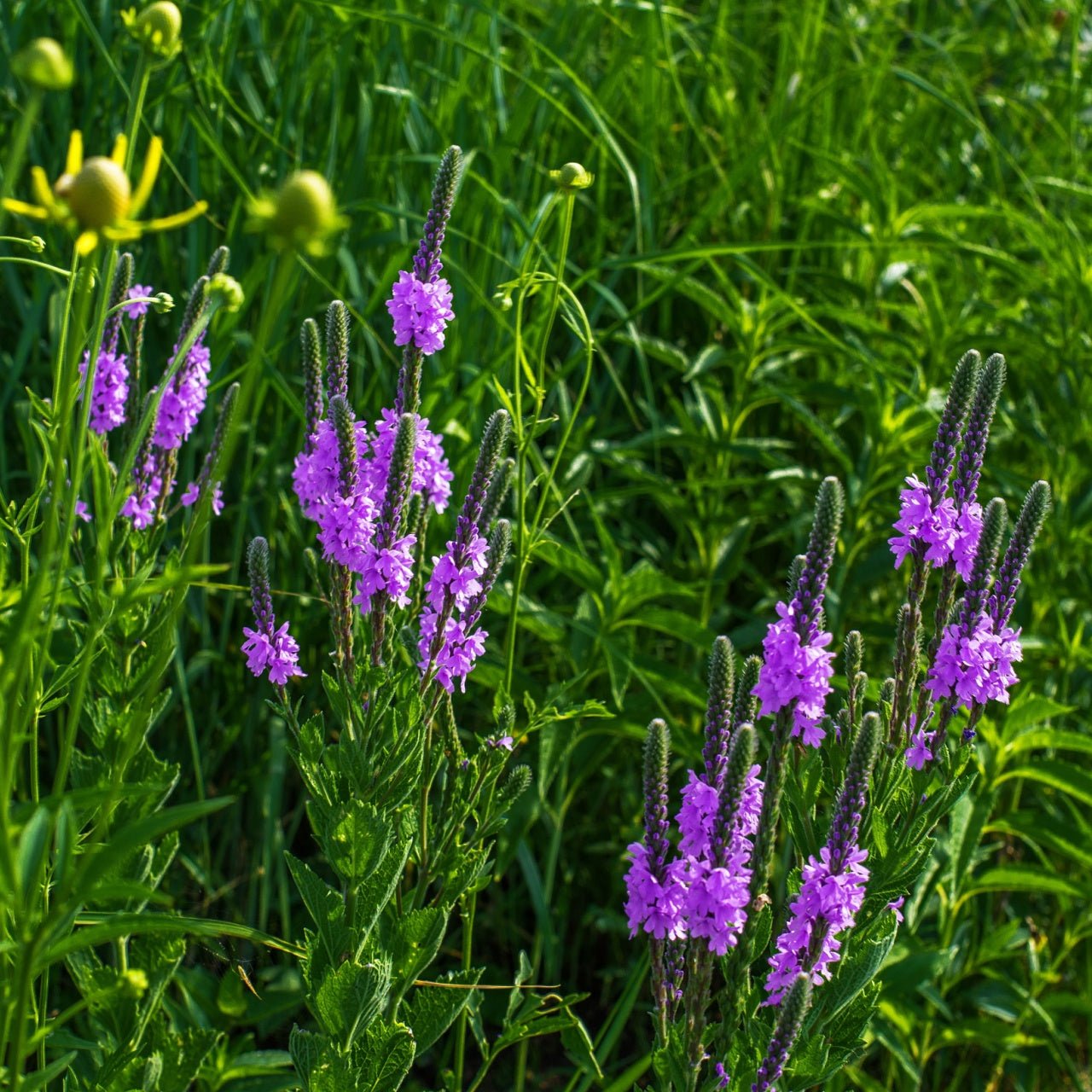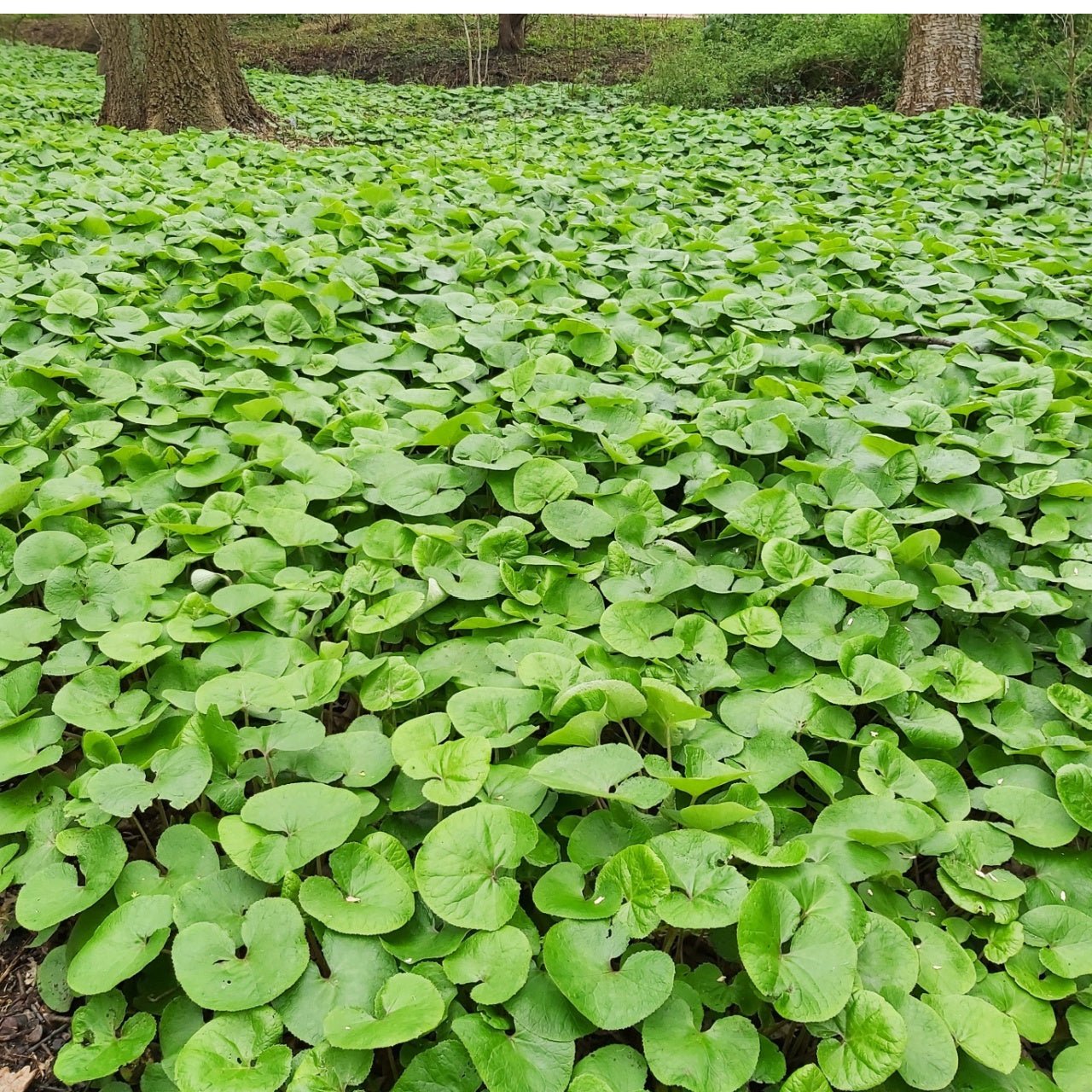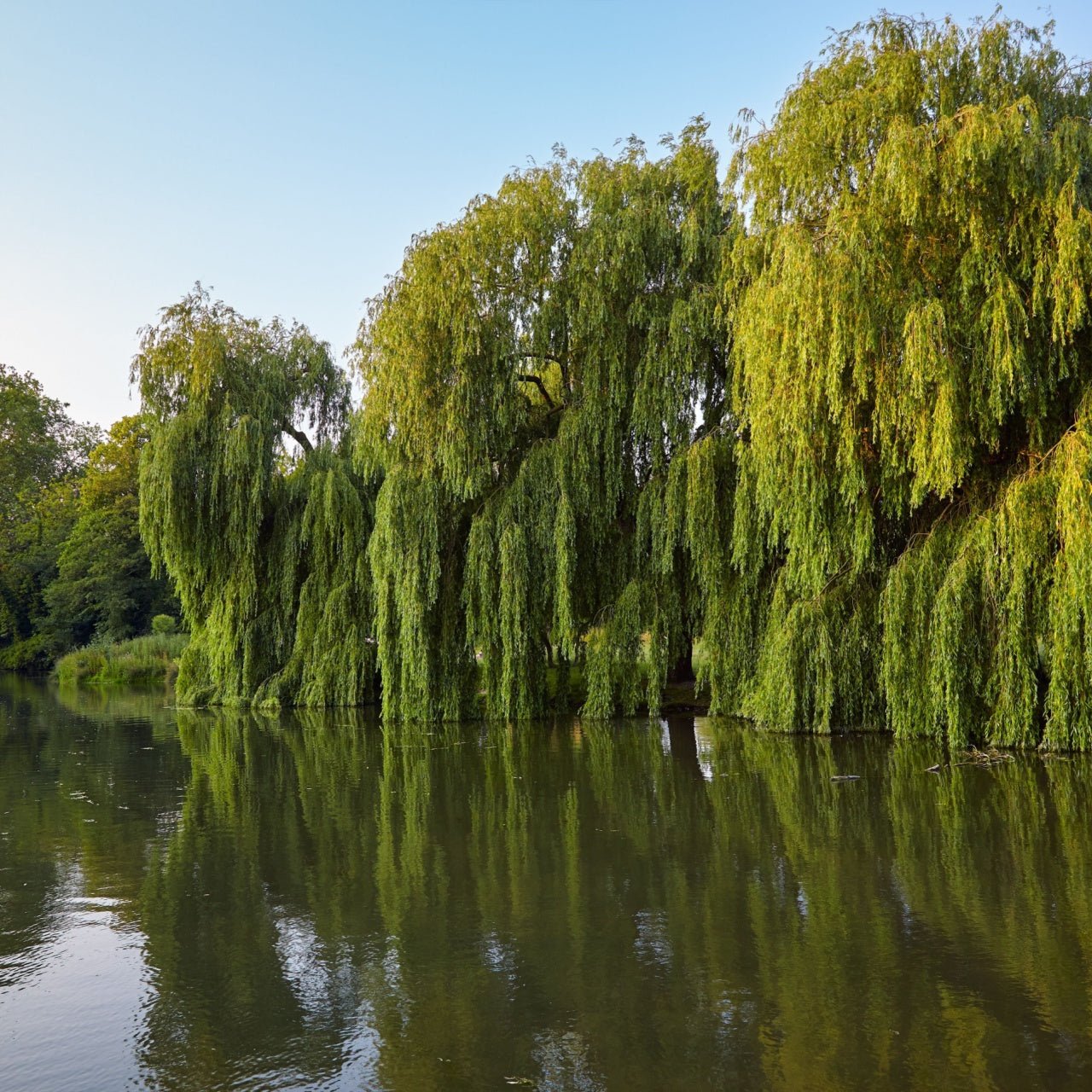If you’ve ever dreamed of a garden that pops, you need a Blue Wisteria Tree. I am always mesmerized by how the wisteria tree’s masses of lavender-blue flowers drape themselves across porches and arbors to create one of the loveliest shade trees. The Blue Wisteria Tree is one of those eye-catching beauties that enhance any landscape with its combination of easy-care foliage and architectural drama.
TN Nursery Customers Can’t Resist This Fragrant Wisteria Tree
Over the years, I have watched many of my TN Nursery customers get carried away by the scent of this fragrant, drooping, beauty. The Blue Wisteria Tree (Wisteria frutescens) has captivated people long before they came to TN Nursery. That’s not surprising when you consider it’s a variety of flowering wisteria that has a native range right here in the southeastern United States. It combines all the head-turning drama of its Asian cousins without their invasive tendencies. In fact, unlike exotic, Asian species of wisteria, this hardy vine maintains a relatively tame growth habit while still delighting onlookers with a springtime floral display that attracts pollinators and wildlife.
Planting companion plants for the Blue Wisteria Tree is all about bringing in other native perennials, groundcovers, shrubs, and even other trees that mirror the plant’s woodland aesthetic and help your landscape support local wildlife. When I work with TN Nursery customers, we first talk about native plants that bring in beneficial insects and cover ground quickly. The Wild Strawberry Plant is a wonderful groundcover that forms a carpet over exposed roots and soil that smells like a summer kiss while providing additional texture and releasing a cloud of tiny white blooms every spring.
I often like to pair the Wisteria with Partridge Berry (Mitchella repens). This plant sports charming white flowers that develop into tiny red berries and pops of color on the ground level of Wisteria, especially in late summer and early fall.
Springing Into Seasonal Contrasts: Native Plants for Young Blue Wisteria Trees
Seasonal contrasts are one of the things I love most about gardening, and the same is true for people who come to TN Nursery looking for native tree care. To create additional color contrasts near a younger Blue Wisteria Tree, I often suggest planting the gorgeous Virginia Bluebells (Mertensia virginica). When they first emerge, the tree’s buds are still tight and compact, while Virginia Bluebells have puffs of delicate light blue flowers. As the Wisteria Tree comes into its own and blooms, the Bluebells fade into dormancy, so the Blue Wisteria Tree has a chance to shine.
Creating A Balanced, Native Plant-Driven Landscape Design
The lessons I have learned from my time in the nursery business can be summarized in a few words: Variety is the spice of life. Balance is everything. Native plants create harmony. The Blue Wisteria Tree is such a stunning focal point, but it pairs so well with a range of other natives. For example, if you are planting in an area of your property with a woodland feel, anchoring your landscape design with a Blue Wisteria Tree and Solomon’s Seal (Polygonatum biflorum) is a great choice. This native vine has slender stems and diminutive white blossoms that undulate through a summer garden, echoing the form of the wisteria tree without competing with it.
Christmas Ferns are another great groundcover that offers evergreen interest during the winter months. They offer a textural contrast to the draping softness of the Wisteria Tree’s racemes and can also help anchor the soil so it doesn’t erode if you are planting on a hillside or slope. In more sunny areas of your landscape, you might consider Blue Vervain or Jacob’s Ladder. Both of these offer vertical accents and native pollinator support.
We love to design layered gardens that celebrate native plants, and the Blue Wisteria Tree offers great potential for this. When the Blue Wisteria Tree is in bloom, the perfume wafts through the air, and you might be surprised how well it complements nearby natives such as Wild Ginger and Goldenseal. These ground-hugging perennials not only release moisture slowly to cut down on irrigation but also help to keep the soil cool and shaded in the summer.
Care and Seasonal Blooming Tips
Blue Wisteria Trees have a refined look, but they are relatively low maintenance. It needs complete sun to partial shade and prefers well-draining soil. It will do well with a little afternoon shade, but this vine does not do well in dense shade. When customers come to TN Nursery to pick out a new Blue Wisteria Tree, we always suggest planting it where it can spread at will or in a spot where it can be trained to climb a strong arbor or fence. Once it is established, it needs little watering. A late-winter pruning will help keep it stimulated for flowering in the coming season.
Blue Wisteria Tree Facts About Seasonal Timing
One of the things that surprises me about the Blue Wisteria Tree is the timing of its flowering. In nature, springtime is just waking up. While other trees have large amounts of leafy growth, the Wisteria Tree is the first to signal the changing of the season with cascades of wisteria flowers dangling from the branches. It is a truly showy addition for late spring or early summer, long after the last frost and when many other native trees have not yet burst into their green foliage phase.
The Blue Wisteria Tree brings a touch of elegance, and a little refinement to a native garden setting. That’s why I think pairing them with Hostas and Evening Primrose is so appealing. Hostas have bold, broad, ribbed leaves forming a beautiful planting bed underneath the cascading flowers. Evening Primrose adds a soft contrast to Wisteria’s more purple tones.
Wildlife and Pollinator-Friendly Plants to Complement a Blue Wisteria Tree
The Blue Wisteria Tree is also a pollinator-friendly native, and to take that a step further, you could consider planting Spigelia Indian Pink or Monarda Bee Balm close by. They are favorites of hummingbirds and butterflies and thrive in the same soil conditions and sunlight as the wisteria tree, creating a fragrant native garden that comes to life in the spring and lingers well into summer.
From the stunning curtain of blooms in springtime to the joyful wave of welcome butterflies with nearby pollinator-friendly plants, the Blue Wisteria Tree is a living statement piece that can help you tell your story. As one of the most popular and well-known natives in my nursery, I have seen this tree used in a range of ways, from large backyard shrubbery to understated front-yard landscaping to pollinator-friendly corridors that make use of space as well as create biodiversity. In addition to being a favorite, the Blue Wisteria Tree is also a remarkably versatile plant. Whether you want to take inspiration from the wild or create a native garden with a more cultivated look, the Blue Wisteria Tree can help you plant a story that matters and give you a garden that grows with purpose.






